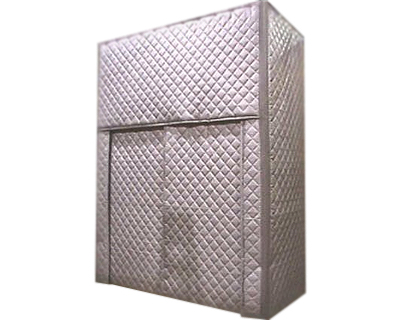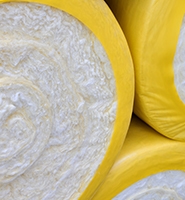Diesel-powered equipment offers some tremendous advantages, but it does come with one consistently difficult challenge: Noise. The ambient noise levels caused by diesel equipment can be deafening, which can pose a substantial safety risk to operators and personnel. Decreasing this risk requires a careful sound attenuation strategy.
While insulation blankets may help to dampen sound, they are often far more effective when combined with specialized sound attenuation material like barriers, panels, or curtains. Firwin’s experts draw on decades of experience in sound management to engineer a solution customized to meet the needs of your facility.
Background: What is Sound?
Understanding sound attenuation technologies requires a bit of background on what sound actually is. At its simplest, sound is a vibration that the ear can interpret based on changes in atmospheric pressure. The level of perceived sound pressure depends not only on what causes this initial vibration but also on the acoustic traits of the surroundings. Some rooms will naturally amplify sound waves while others are specifically designed to absorb and minimize the disturbance before it reaches the ear.
Sound can be quantified in Decibels (dBs), which is especially useful when discussing personnel safety. The human ear can only tolerate certain noise levels without sustaining damage, up to and including permanent hearing loss. OSHA standard 29 CFR 1910.95 dictates the upper limit of tolerable noise as being 85 dBs.
Sound can also be classified by frequency levels, which are interpreted to the ear as different pitches. These vibration frequencies are measured in Hertz (Hz). Isolating and addressing a noise problem requires careful attention to both frequency and volume.
To do this, analysts will break down all present frequencies into eight or nine octave bands. They will then analyze the resulting octave band frequency report in combination with a report of dB ratings in the same room. This provides a full picture of the acoustic situation in the room, allowing an engineer to develop a solution that addresses the specific problem in context of any physical constraints.
Sound Attenuation Materials
Insulation solutions typically combine several materials, each intended to either absorb or block sound. Providing physical barriers in this way can prevent sound leakage and decrease the overall level of sound in a room.
Different materials are better suited to noises of different frequencies. For instance, fiberglass and mineral wool are known to be very effective against high-frequency sounds. Lower frequency sounds are more complicated because they consist of longer wavelengths that are harder to absorb. In these cases, thicker materials and barriers must be used to absorb as much of the wavelength as possible.
Safety is another key consideration for material selection. Sound attenuation is typically necessary in hazardous industrial environments, meaning that any solution must be able to withstand intense heat and other harsh environmental factors. At Firwin, we construct our blankets using only non-combustible materials that conform to MIL and UL fire standards, ensuring that all our products can hold up to extreme temperatures.
Firwin Solutions
Firwin takes pride in offering custom solutions for every client we work with, selecting the most appropriate materials and structures to match the layout and operating conditions of every facility.
 For engine rooms, we typically choose to insulate the walls with tightly packed fibrous glass, mineral wool, or open-cell foam panels, providing effective absorption of high-frequency noise. In other situations, we might opt for a composite such as Firwin BTMM14C. Composites are advantageous when there is a fuller octave spectrum of noise pollution present.
For engine rooms, we typically choose to insulate the walls with tightly packed fibrous glass, mineral wool, or open-cell foam panels, providing effective absorption of high-frequency noise. In other situations, we might opt for a composite such as Firwin BTMM14C. Composites are advantageous when there is a fuller octave spectrum of noise pollution present.
We’ll also consider whether your equipment requires regular maintenance or inspection. If so, we might include removable sound blankets as a part of your solution, making it easy to remove and replace as needed.
We understand that sound attenuation can be complicated, so we’ve created a whitepaper that simplifies material selection for facilities working with diesel equipment. This resource breaks down the most common absorption materials, including comparison charts and tables. It also presents transmission loss and STC information for our composite absorber/barriers used in engine rooms and containers.
To learn more about Firwin’s sound attenuation solutions, download our whitepaper, “Sound Attenuation – Diesel Powered Equipment.” Feel free to contact us with any specific questions.


Comments are closed